Image courteousy of lacquerheadsofoz.com
There are three types of people in the world. People who produce content, people who steal content, and everyone else. It’s a sad fact of the internet that the second category exists in much greater numbers than you might otherwise think.
The problem is two-fold. First of all, the internet is enormous. Someone could have stolen a bunch of pictures from your Instagram account and posted them on their blog, and you might not find out for years, if you ever find out at all. Unless you’re using a watchdog program or you’re constantly reverse image searching your images, it’s difficult to find instances of copied content without some fan alerting you. If Google doesn’t index the images, it might be impossible to find through searching.
The second part of the problem is ignorance. Copyright law, trademark law, and intellectual property laws are all interconnected, labyrinthine, and virtually impossible for a layman to understand. That’s why copyright lawyers exist, after all. How difficult is it, do you think, to get a good grasp of the intricacies of copyright when other people are going to school for the better part of a decade just to understand it?
Now, not all theft is ignorance. Sure, there are a lot of people who run a Google search for a keyword, pull an image from the image results, and assume they can use it. They think that just because there’s no paywall or barrier in the way that it’s free to use. The opposite is generally true – unless they’re using a creative commons search – but that doesn’t stop people from having no idea what they’re doing.
A lot of theft, though, is simply done under the premise that prosecution is impossible. If some small blogger copies a couple of your images, are you going to sue them? Probably not. Suing someone costs a lot of money and time. Chances are you’re just going to ask them nicely to take it down, and proceed to an official cease and desist if they don’t. You might escalate to talking to their web host, but actual lawsuits are a last resort.
Then there are the people who knowingly engage in theft because they assume they’re untouchable. This Twitter thread from just the other day talks about someone running a shop made up of merchandise almost entirely stolen from various artists. The store owner likely knew that the art was not original, but they assumed that since those products were available in bulk on AliExpress that they could resell them just fine. Of course, the initial theft here came from the people who produced the merch, likely Chinese manufacturers who don’t get two hoots about copyright law. After all, if you thought suing some blogger in America was tough and expensive, just trying suing a Chinese manufacturing warehouse.
When it comes to someone stealing content on Instagram, you have options you can take to resolve the issue. Is it worth it to do, and if so, how should you go about it?
Finding Stolen Content
Instagram is tricky when it comes to stolen content. Google does not actually index Instagram photos, just profile information. This means you can’t reverse image search your photos and see if they show up on Instagram, at least not directly. You can sometimes find them if one of the many “view Instagram on desktop” copy sites has copied it, but that’s not necessarily going to exist. Unfortunately, there are no Instagram-focused watchdogs like Copyscape either.
Instagram being a walled garden like it is means you only have two ways to find content of yours that might be stolen. You can find it yourself, or you can get a tip from one of your followers. Many followers either won’t notice or won’t think to tip you off, though some will, so that’s a boon. Finding it yourself relies on you checking the hashtags that would apply to your content and happening to find it stolen, which is a crapshoot. Unfortunately, there’s just no good way to find content theft on Instagram.
That said, for the sake of this post, let’s assume you’ve been tipped off to an account that isn’t yours posting your content.
Is it Theft?
The first thing you need to do is figure out if the content has actually been stolen or if the account’s use of it is protected. This comes down to a copyright law relating to fair use.
First of all, any content you publish is copyrighted when you publish it. You don’t need a visible copyright symbol or date, you don’t need to file paperwork; the process is completely automatic.
Secondly, a fair use clause exists. This clause gives people limited rights to use your content as long as the use is deemed “fair” in the eyes of the law. This is generally used to protect content used in parodies, content reproduced for criticism, and brief quotations of text in other contexts.
Again, copyright is a huge mess. There are a lot of different forms of use that have been decreed in court to be fair, while others have been deemed violations of the law. In large part, it comes down to intent, attribution, and purpose of the copy. You can read more about different kinds of violations here, though it applies more to text than to images.
What it basically boils down to, on Instagram, is whether or not the content is modified, the user is profiting off it, and if it’s surrounded by context.
- If the content is reproduced with no alternations and no attribution, it is almost definitely theft.
- If the content is reproduced with no alterations but visible attribution, it’s still probably theft.
- If the content is reproduced with no alterations, but is used in a way that criticizes it, it could be fair use. Remember, copyright doesn’t protect you from criticism you don’t like.
- If the content is reproduced with minimal alterations, like the removal of a signature or watermark, mirroring, or a minor color filter, it is likely theft.
- If the content is reproduced with major alterations, like Blingee or conversion into a meme, it’s almost definitely fair use.
The only way to truly determine, for good, whether one use is fair use or not is to take it to court. Otherwise, the best you can do is reference existing case precedence and the few clear-cut cases, and be willing to take action.
If you have determined that the instance of stolen content is likely NOT fair use, continue reading.
Choosing Perspective
The next thing you have to do is determine whether or not you’re going to be aggressive. This comes down to your relationship with whoever is stealing your content and their use of that content. Generally, you can be the good cop or the bad cop.
You should be the good cop if you have an existing relationship with the thief, if it was likely a valid misunderstanding, or if the “theft” could be benefitting you. Here are some examples:
- The user “stealing” your content is a fan of your industry in general. They’re using their account to aggregate content they consider great; being featured could in some lights be considered an honor. They have a sizable following, so raising a stink about it could hurt your own reputation. They have attribution visible, so even though the content is copied wholesale, it can still benefit you.
- The user stealing your content is generally unaware of how copyright law works and how social media sites work, and thinks they’re just sharing your content. You can reach out and explain the issue.
In these cases, you have a choice; you can leave the “theft” where it is, or you can send them a message to politely explain the issue and ask them to stop. It’s a lot easier to keep a reputation as a friendly brand if you’re avoiding sending out legal notices at every turn.
Another option is to send an invoice for using your image, like Getty Images does if someone uses one of their images without permission.
You should be the bad cop, meanwhile, if the theft is excessive, flaunted, or used for profit. For example:
- The user brags about stealing their content as if no one will find out, and their audience doesn’t seem to care.
- The stolen content is used in print-on-demand shops like CafePress or Redbubble. Making a profit off of work that isn’t yours is a clear violation of copyright law.
- You sent a polite notice of the copyright violation and asked for the content to be taken down, but the user has not done so. Escalation is in the cards.
In general, you want to give people the benefit of the doubt, and you want to start with casual communication and only escalate to legal action as a last resort.
Note: never threaten to sue someone if you’re not willing to back it up immediately! If you threaten to sue someone, it will hurt your reputation first and foremost. You start to look like a bully, especially if it’s someone who likes you and thinks they’re doing you a favor.
Worse, if the person on the other end represents a business or has money of their own, the first thing they’ll do is lawyer up and cease communications. If you fail to follow up on your legal threat, you look toothless, giving many others an opportunity to steal your content as well.
If you’ve decided to fight for your right to your content, keep reading.
Fighting in the Streets
So how should you go about actually fighting copyright? Remember; legal action is a last resort.
Step 1: Screenshot everything. You want proof in case the user locks down their account or removes the post. Make sure to get the URL, the profile, and the description all in your screenshot. Likewise, make sure you have your own version of the content visible for comparison.
Step 2: Reach out to the offending user. Send them a message through the Instagram direct message system, or through a contact email if they have one publicly available. Tell them that X post (with a link to their post) is a copy of your content (with a link to your post) and that you would like it taken down, or at least to have credit added to the caption or image. Ideally, the user will apologize and take it down or credit you. If they try to argue back, you get to move on to step 3.
Step 3: Report the copyright violation to Instagram. If you end up having an interaction like this, it’s time to take things to the next higher authority.
Instagram has their own copyright system you can use to report copyright violations. You can find their instructions here and the actual form to fill out here. Here are some things to know.
- Copyright claims are not anonymous. If you’re claiming copyright on a piece of content, the copyright claim has to include your information and proof that you’re the owner or a representative of the owner of the copyright. This information will be provided to the person who stole your content to prove that the copyright owner is taking action.
- You need enough information to prove the violation of copyright. This is where your screenshots come into play, in case the user makes their profile hidden or blocks you from fetching it after initial contact. URLs, if you have them, are ideal.
- You must declare, legally, that you own the copyright and that you believe in good faith that the person you’re reporting is violating that copyright. This helps prevent fraudulent takedowns and mass reporting by people who aren’t relevant to the discussion.
Nothing stops the user from stealing more of your content in the future except the possibility of future action. Likewise, nothing stops the user from harassing you using the personal information you’re forced to reveal. It’s a problem, and not one that can be solved if you want to enforce your copyright.
If the user keeps stealing and reposting your content, you can keep reporting them, and eventually Instagram will ban them. If they make more accounts and keep stealing your content, then you have a very dedicated troll on your hands. This is the only case where actual legal action might be necessary, though you will need to talk to a lawyer, to Instagram’s lawyers, and to other authorities in order to start that whole process. I, uh, recommend not taking things that far.
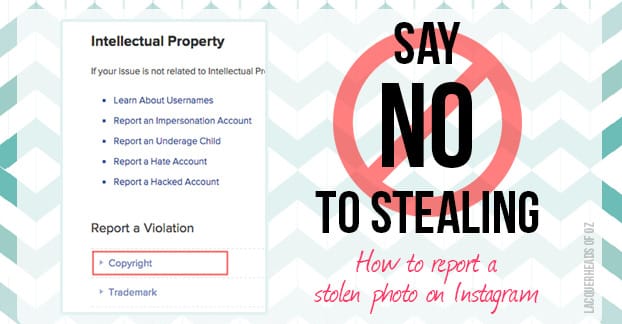
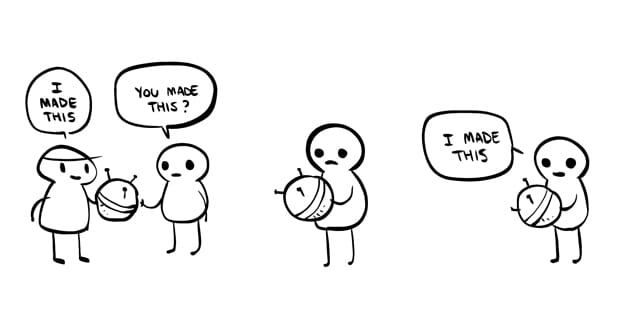
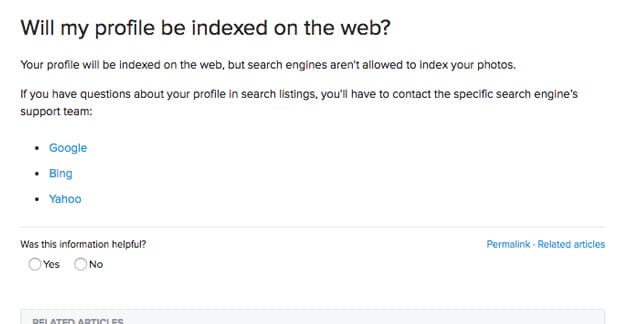
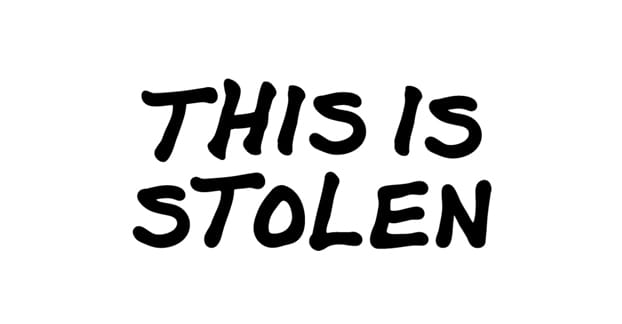
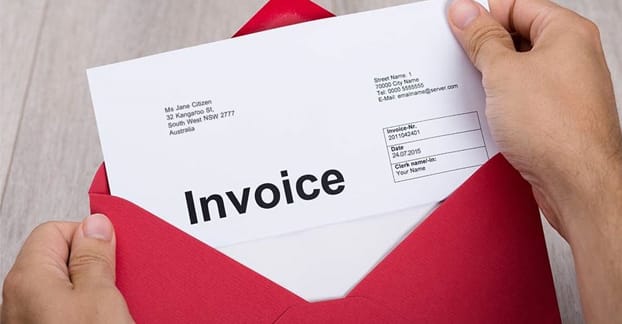
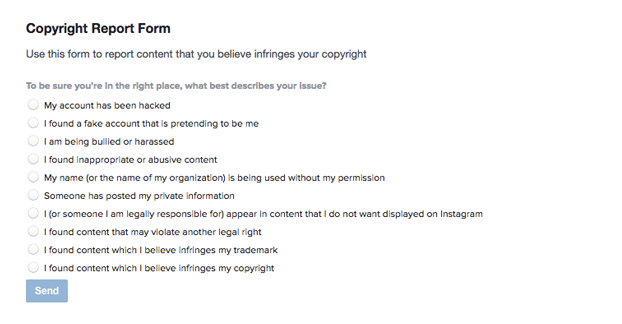




One can provide detailed proof of owner ship but that will not promise the stolen work will be removed. You can detail out a photo, explain in detail watermark, show original work and depending on who at Instagram is reviewing your case will depend it the stolen work is removed. One day it works….a couple of days later, the person steals more, you report it in a very detailed manner and Instagram will deny your request to have the photo removed. You have a 50/50 chance of Instagram protecting your hard work